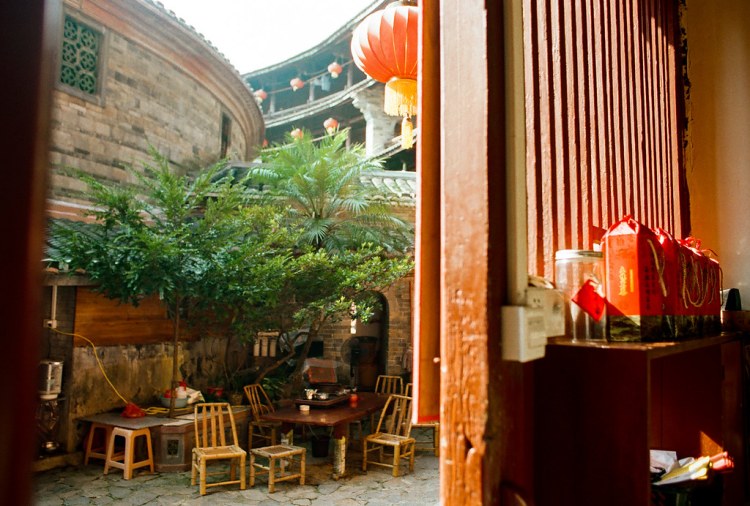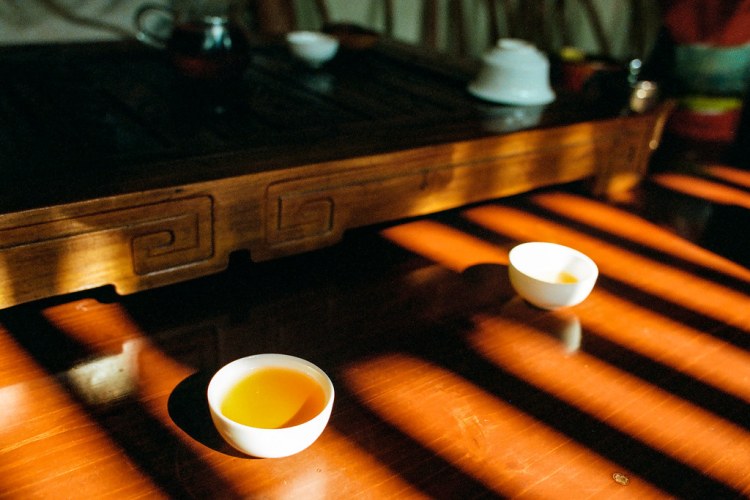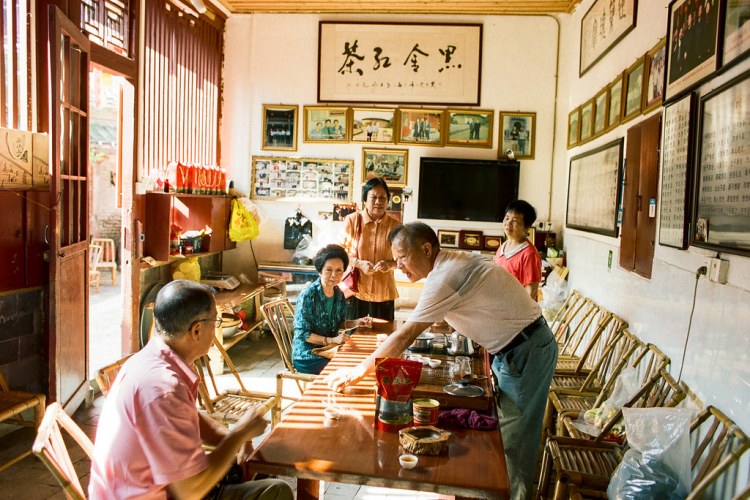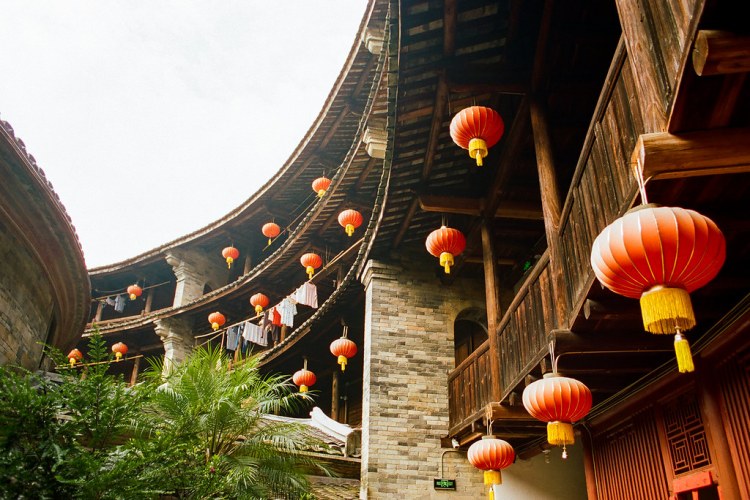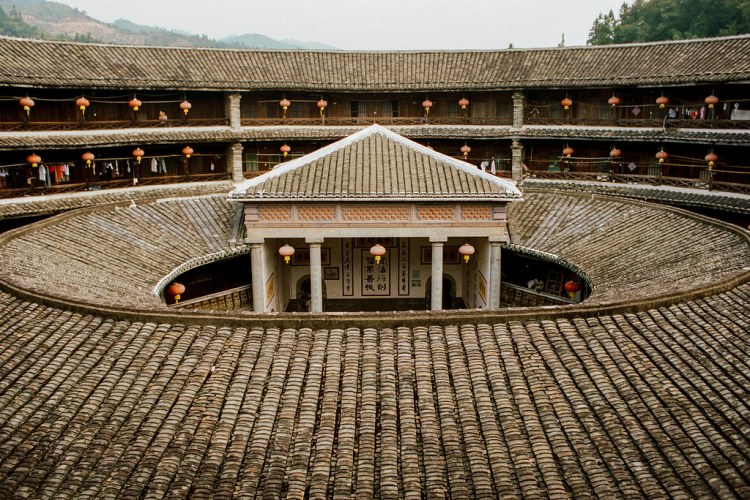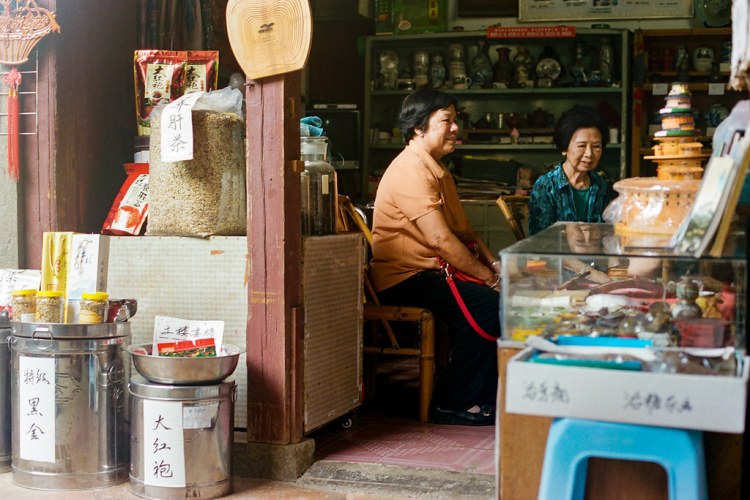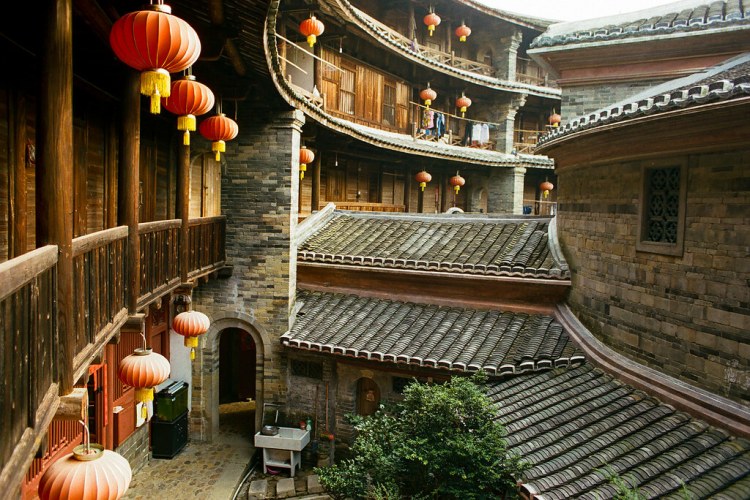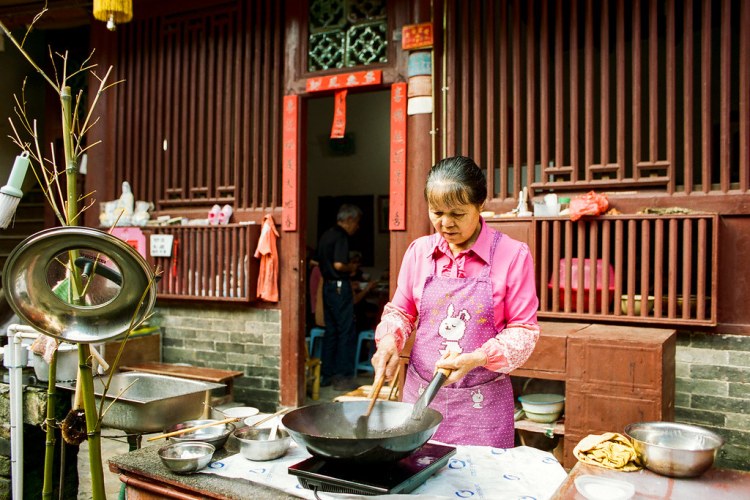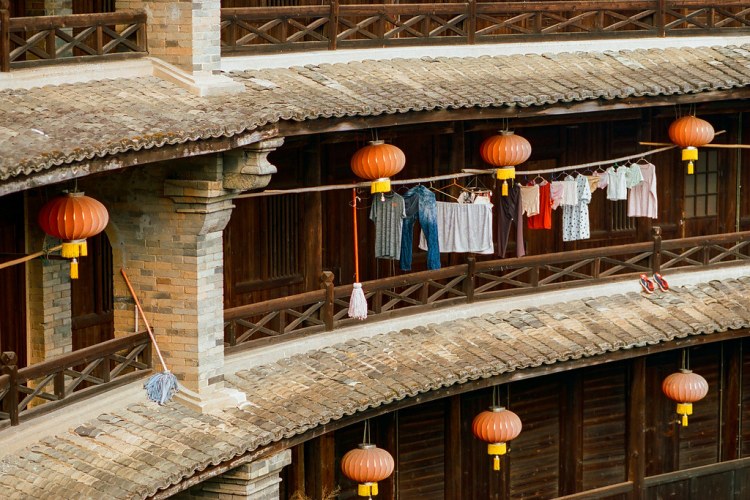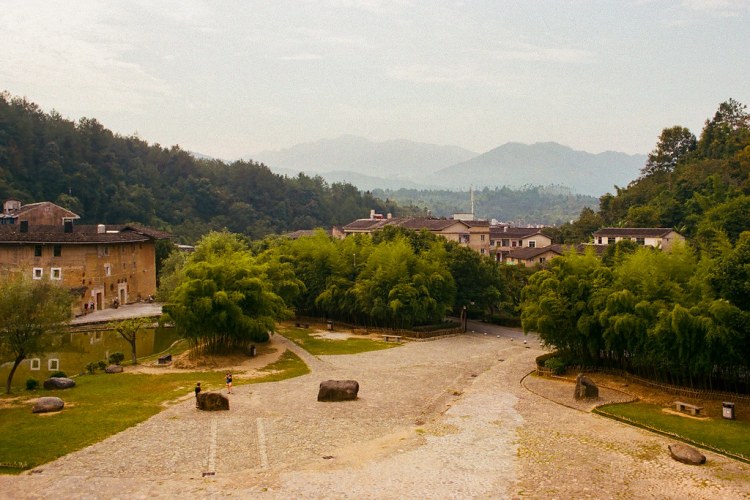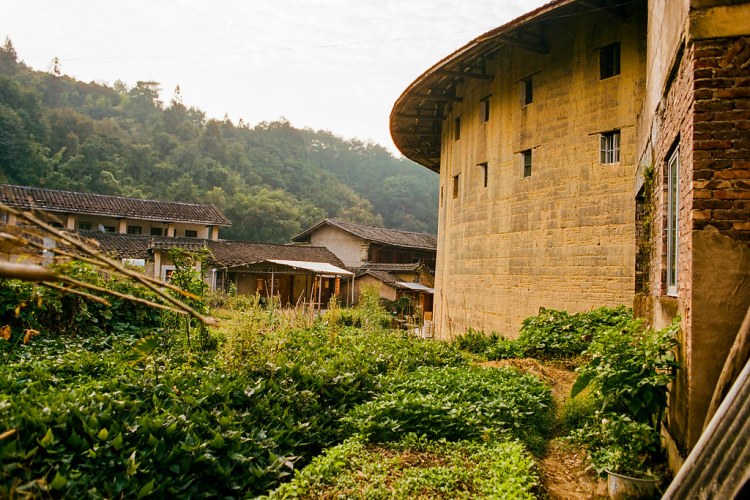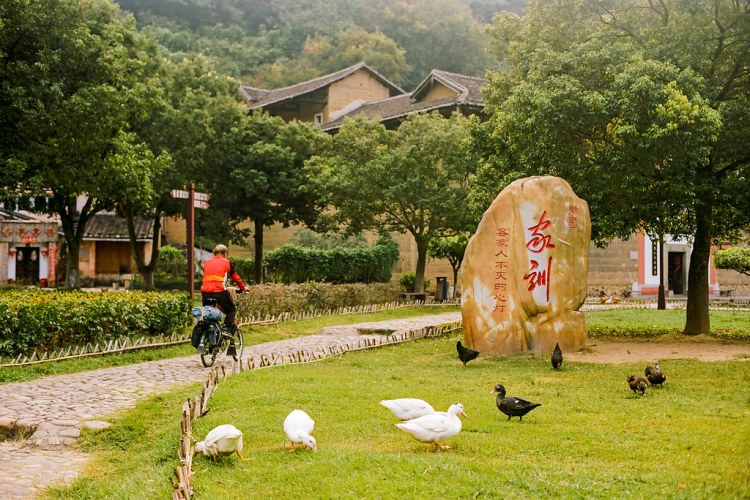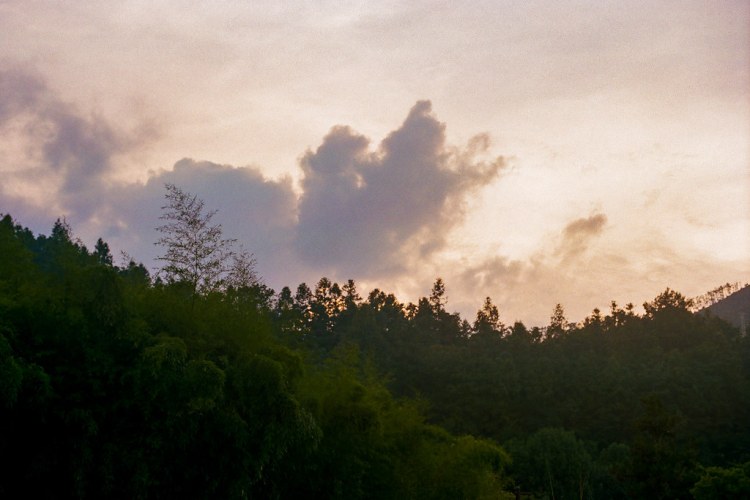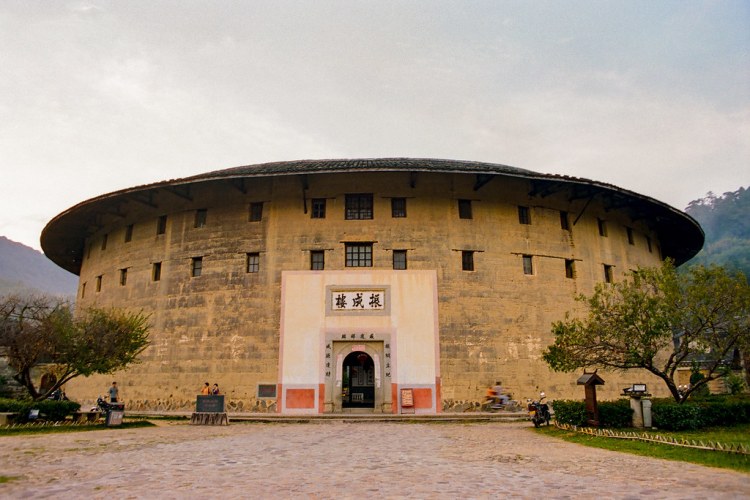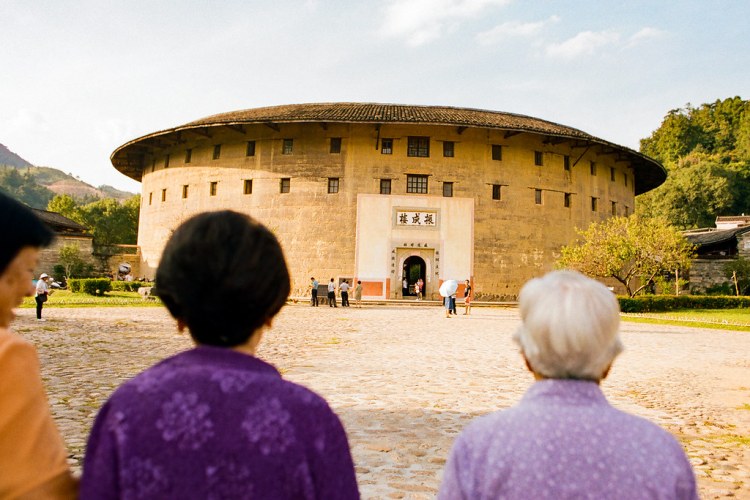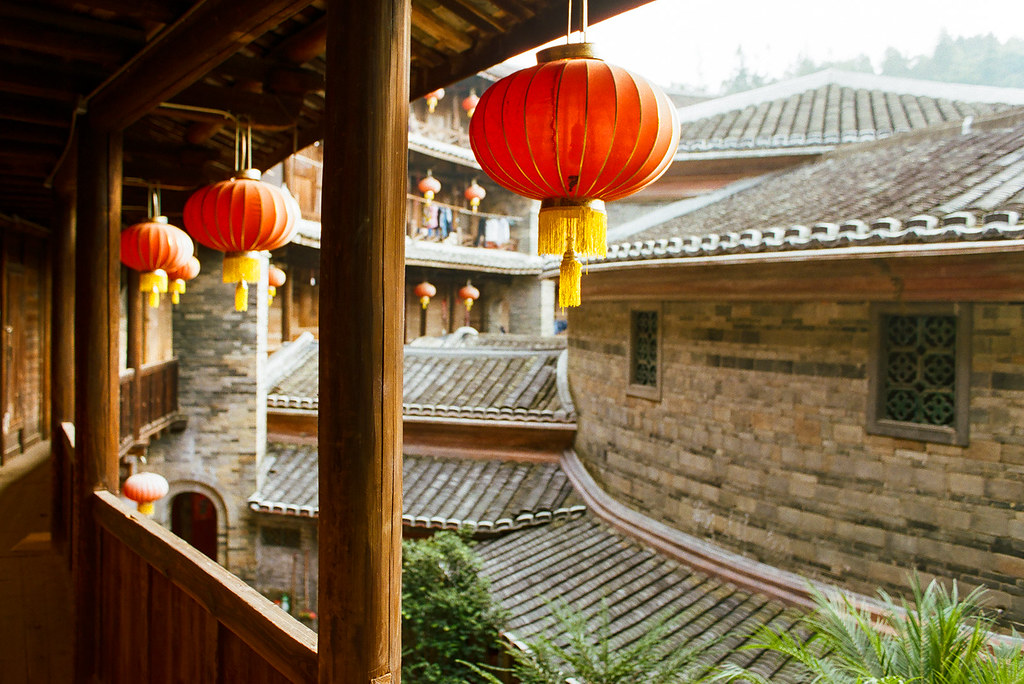A National Geographic reporter, in 2015:
“‘Where is everybody?’ That was my reaction almost every time I stepped inside a tulou. In places built to hold hundreds of people, often only five or six residents remained. They were mostly old-timers, frail and living alone. Weeds often grew among the cobblestones, and the wells held stagnant water. Sometimes a small child stood in the shadows, one of the so-called ‘left behind children,’ consigned to the care of an aged relative while the parents live and work in a distant city.”
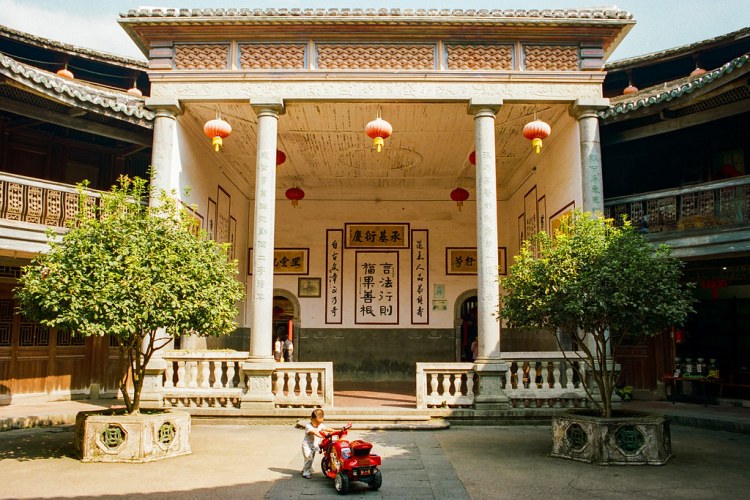
© 2017. A young «tulou» resident savors a quick break between the morning’s guided tours in 振成樓’s central courtyard in front of the ancestral hall, perhaps the only Fujian «tulou» with Greek-style columns. Hongkeng Village, Yongding County, Fujian, China. Thursday, Sept. 21, 2017. Portra 400, Canon EOS A2.
“[Zhenchenglou] is known for its grandeur and exquisitely versatile internal design… [W]ith very high aesthetic taste, it can be regarded as one of the masterpieces of architecture that combine Western and Chinese techniques” (UNESCO).
The Western influence can be seen in the moorstone-made, Greek-style columns of the ancestral hall, as well as in the “cast-iron railing of western delicate pattern” found on the second floor of the inner circle.
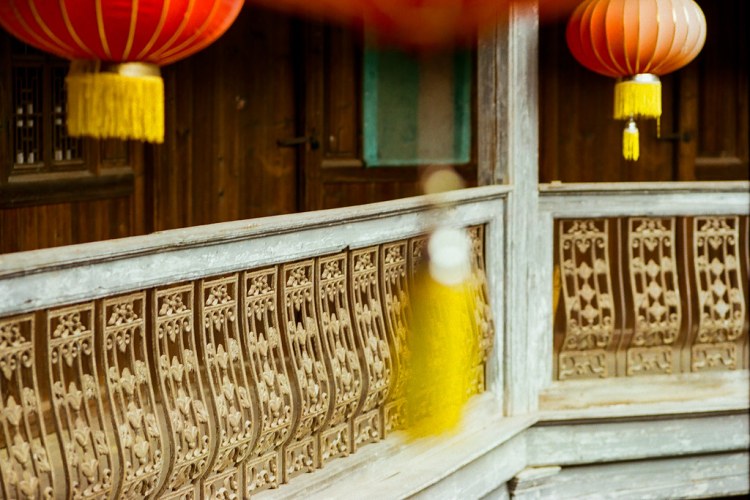
© 2017. Wrought-iron railing along the inner ring of Zhencheng Lou (振成樓) in Hongkeng Village, Yongding County, Fujian, China. Thursday, Sept. 21, 2017. Portra 400, Canon EOS A2.
But even as the «tulou» “for the first time introduced Western architecture into the construction of Hakka circular buildings and had certain influence in Yongding County” (UNESCO), traditional Chinese elements remain.
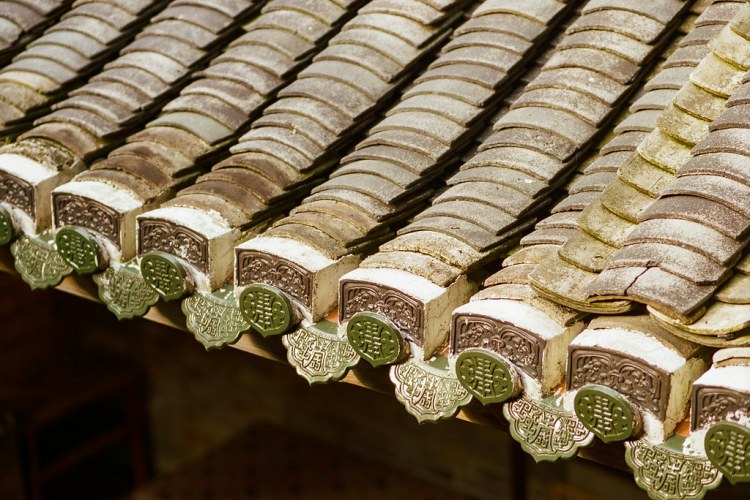
© 2017. Roof tiles of Zhencheng Lou (振成樓) in Hongkeng Village, Yongding County, Fujian, China. Thursday, Sept. 21, 2017. Portra 400, Canon EOS A2.
The same National Geographic reporter in 2015:
“To accommodate the needs of these tight-knit communities, the tulou evolved into a structure where entire branches of a clan, often numbering in the hundreds of people, could live together in one building, a design unique in the world. A castle in western Europe would open its gates to villagers only in times of attack or siege. A tulou protected and housed people all the time.”
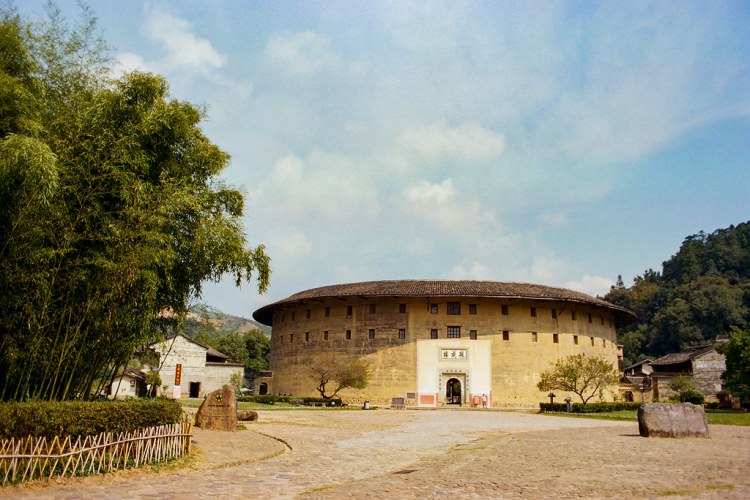
© 2017. Zhencheng Lou (振成樓) in Hongkeng Village, Yongding County, Fujian, China. Thursday, Sept. 21, 2017. Portra 400, Canon EOS A2.
This «homelandcoming» series features film I shot when I traveled with my grandmother in 2017 to her ancestral home in China, which she had not seen in 74 years.
Some frames show the postcard-perfect scenery of «tulou» (“earthen buildings”) practically untouched by time; others reveal the everyday details that fascinated or amused us, and served to remind us that modern-day life continues for the residents who remain.
As a whole, this series is not a comprehensive visual diary of our trip — rather, it is a selection of a selection, showing the intersections of history and modernity, of authenticity and tourism, and of foreign and familiar.
